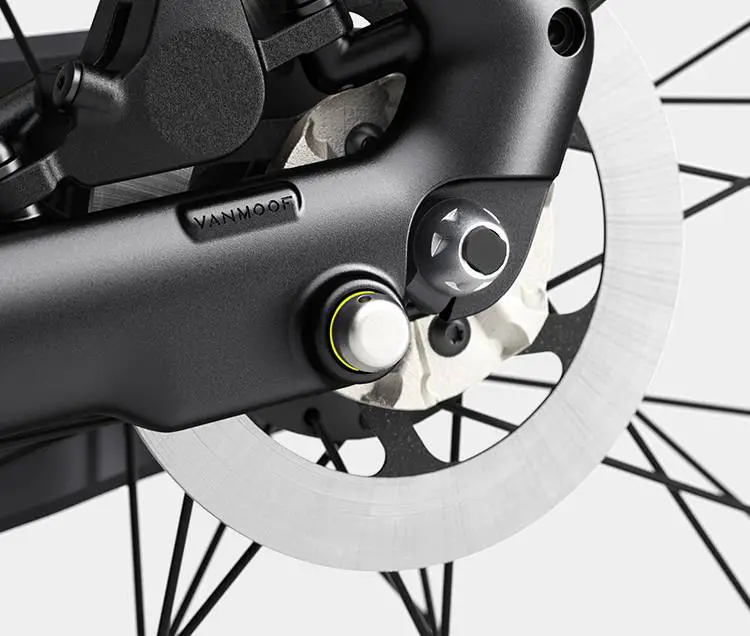Last Updated on July 11, 2023 by Igor Karni

Do e-bikes charge when you pedal? What is regenerative braking? Is this technology worth it? We will cover these topics in the article below. Stay with us!
Toyota Prius first hit the market with a breakthrough technology called ‘regenerative braking,’ and ever since, it has remained popular on many vehicles. Naturally, many cyclists, especially electric bike owners, assume that their bike would also own the regenerative braking feature.
Table of Contents
But are they correct? Does it make sense to use regenerative braking on electric bikes?
Let’s look closer into this question.
Do e-bikes charge when you pedal?
No, most electric bikes do not charge when you pedal or just roll (going downhill, for example). E-bikes with a regenerative braking system installed charge when you pedal, but the energy produced is minimal and is not usually worth the complexity and installation costs.
Regenerative braking refers to the process used by e-bikes to convert kinetic energy into electric charge to be used by the battery. Current technology levels, as well as the speeds and weights of electric bicycles, do not allow using regenerative braking effectively on e-bikes.
What is regenerative braking on e-bikes? Is it worth it?
Regenerative braking or ‘Regen braking’ is a breakthrough concept for environment-friendly vehicles. It was made popular during the early 2000s and is widely used in electric cars and other vehicles. The idea soon followed for smaller vehicles and went further in applications, including e-bikes.
Many e-bike riders may think that e-bikes actually use their regenerative braking to convert the kinetic energy during braking to charge the battery. Although bike manufacturers tried to popularize the idea, it didn’t see much success at the moment.
To be honest, regenerative braking on e-bikes is not worth it. There are several reasons why such a braking system isn’t worth much to be installed on e-bikes.
Easy Fact: E-bike regenerative braking systems currently are not capable of producing, converting or saving enough energy, to make such systems worthwhile to be installed on e-bikes.
Now let’s investigate one at a time.
Electric bikes do not produce enough kinetic energy for regenerative braking
To understand the importance of energy for regenerative brakes on e-bikes, we need to figure out the connection between vehicle size and kinetic energy.

To be specific, kinetic energy is the sum of the mass of a moving vehicle multiplied by the square of velocity at which the vehicle is moving. Finally, the total is divided into half, which then gives the final result of kinetic energy for a moving vehicle.
So, the equation will be:
KE (Kinetic Energy)= ½ * m * v²
Here, ”m” stands for vehicle mass, and “v” stands for the velocity of the vehicle.
The equation explains that a vehicle with higher mass will produce higher kinetic energy, which the regenerative braking system can store in the battery. And right here, the weight of the electric bicycle comes into play.
An e-bike is far less weighty than a car, for example. Also, cars usually have higher velocity, often running well at 60 miles/h to 80 miles/h regularly (100-130 km/h).
Read also: How heavy are e-bikes? And, Can an e-bike pool a trailer?
It is clear that the kinetic energy of an e-bike will be far lower compared to that of a car. A standard e-bike will weigh anywhere between 38-70 pounds. Converted to kilograms, it will be roughly around 20kg to 35 kg. E-bike’s average speed is around 25-30 mp/h, which is 40-50 km/h.
An average car weighing well over 1000 kgs or 2000 pounds and running at 80 mp/h (130 km/h) will have far lot of energy to release via its regenerative braking system.
Hence, due to the lack of the right amount of kinetic energy, the idea of regenerative braking on an e-bike isn’t normally a practical one.
Electric bikes lack efficiency in converting energy from regenerative braking
We already know that e-bikes will produce a minimal amount of kinetic energy. To make things worse, the efficiency of converting such generated energy from mechanical into electric isn’t promising either.

Let’s do a bit more math.
Since we know the formula for kinetic energy, let’s find the kinetic energy of an e-bike weighing 25 kg and running at 25 mp/h. We will take into account the rider’s weight as well.
An average human weight will be around 75 kilograms (assuming an athletic and well-built body). So, the total mass (e-bike and its rider) will be 100kgs.
Let’s convert the mp/h into meters per second. For 25 mp/h, the bike velocity for each second will be roughly 11 meters per second.
So, the kinetic energy will be,
K.E.= ½ * 100 * 11²
The result will be 6050 joules of energy per braking cycle.
Does it seem considerable?
Well, let’s take it further, then.
Read also: What is the difference between a regular e-bike and a speed e-bike? And, is it legal to derestrict electric bicycle speed?
The 6050 joules of energy are equivalent to 1.68 Wh for a 36V battery in an e-bike. So, in real life, to get a 5% boost in the battery capacity, you will need to stop/brake at least 40-60 times on a 25 miles ride. This takes into account roughly 50% efficiency of e-bikes’ regenerative braking technology.
To express this in battery recharge numbers, if you perform 10 full braking actions during the entire trail, and the regenerative brake is working perfectly, the bike battery will get a mere 1.75% charge increase. Does it seem viable for the amount you will pay for the technology?
So, the conclusion is that riding through plain lands and flat roads won’t have the energy efficiency for the right kinetic energy. So, the use of regenerative braking is pointless in such cases.
Commuting on an electric bicycle through hilly areas
When you ride through hilly landscapes, you might consider that at least this time, the regenerative brake will be suitable for your favorite e-bike commutes.

Not so quickly. Let’s take closer one more time.
Read also: Can e-bikes help climb steep hills? And, How safe are electric bikes?
This time we will measure the potential energy. It is calculated by the “gravity * height * mass” formula.
Let’s put this into math again.
But first, let’s clarify how much energy boost of the batter you would want after a downhill and uphill riding. Let’s assume most of us will be happy with a 20% increase in battery energy level. So, in a 36V battery with 2Ah power, you will need to generate at least 2,59,200 joules.
Let’s assume, again, a 50% energy conversion rate.
Given the above, if the full load is 120kg (e-bike and its rider) and the expected descent path is 220 meters, the actual riding length needs to be 440 meters to generate enough energy, e.g., twice as much.
Read also: How much can an e-bike carry? And, Can an e-bike pull a trailer?
So, here’s the answer. If you don’t plan to go mostly downhill and do this multiple times along your ride (which means that you will mostly be going downhill on your ride and will have to keep braking often to bring your speed down, which is very unlikely), the use of regenerative braking is again pointless. It is, thus, for the moment, nothing more than a gimmick for the e-bike concept.
Even riding through hills will not effectively utilize a regenerative braking system on an electric bicycle. So, using regenerative braking in such cases also does not make much sense.
The e-bike braking system is not built for regen braking
In electric cars, regenerative brakes use the most advanced and sophisticated braking mechanism to allow the driver to take full control of the vehicle. These hybrid cars blend regenerative and conventional disc braking with perfection.
However, the combination of such technologies is expensive, and the overall system is too weighty. Also, in a car, such a braking technique works equally on both front and rear brakes.

But electric bicycle brakes function in a different way. The true potential of the electric bike brakes depends on the independence of the front and rear levers. So, the regenerative brakes will work only one brake (front or rear) on one braking cycle. This makes the regen braking idea on e-bikes less practical.
Also, bikers mostly use the front brake to control their e-bike on the road. That being said, installing such an expensive and weighty braking mechanism as a regenerative one would limit the mobility of e-bikes.
Furthermore, the lack of a regenerative braking system on both wheels is undoubtedly going to affect energy conversion.
A few words in conclusion
As we have been able to see (and math has confirmed), the use of regenerative braking on e-bikes isn’t a valid and practical solution for boosting battery power.
First, you won’t get the right amount of kinetic energy, and second, it doesn’t have the efficiency for the conversion.
Also important to mention is that regenerative brakes are less controllable in an e-bike, which could potentially put its rider on the brink of an accident. Regen braking systems are often expensive and weighty, which makes them not practical for installing in an e-bike.
Read also: Ever considered offering e-bike as a gift? Or gifting one to yourself? Check out our suggestions – in this e-bike gift guide.
Igor is a sustainable mobility and green energy advocate. His mission for Easy E-biking is to help make electric cycling simple, practical, and fun. Follow him on Facebook and LinkedIn.





